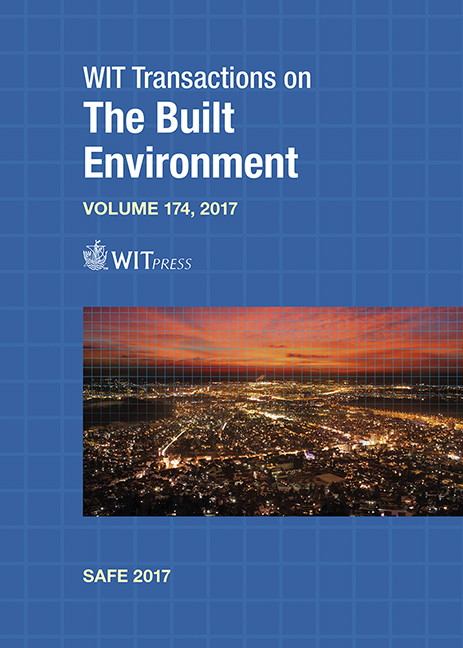MITIGATION OF DAMAGE CAUSED TO DRINKING WATER AND SEWAGE PIPES DURING SEISMIC AND HYDROLOGICAL EPISODES
Price
Free (open access)
Transaction
Volume
174
Pages
14
Page Range
413 - 426
Published
2018
Size
1,196 kb
Paper DOI
10.2495/SAFE170381
Copyright
WIT Press
Author(s)
RAMÓN EGEA PÉREZ, JESÚS P. CHAZARRA ZAPATA, FRANCISCO J. PÉREZ DE LA CRUZ, FRANCISCO J. LÓPEZ PEÑALVER
Abstract
In the present investigation, the development and implementation of different typologies of elements and devices that increase the reliability of pipes of a fragile nature is proposed. This ensures continuity of a drinking water supply and sewerage, which is especially necessary during and after natural disasters related to hydrology and seismicity, and is even more necessary to alleviate its adverse effects. Drinking water supply and sanitation networks, as basic elements of urban water infrastructure, can generate a high degree of vulnerability in the case of a seismic movement or an episode of heavy rain, which requires the adoption of new designs of elements or devices and resilient materials to absorb the stresses generated and the mechanical loads occurring during such risk episodes. Experience has shown that the piping of metallic materials (ductile iron, steel, and other alloys), and reinforced concrete, although more rigid than plastic pipes (polyethylene, PVC, fiberglass reinforced polyester PRFV), has a capacity to absorb movements, which is mainly due to the one provided by the unions, since it generates a flexibility as a whole (pipe and joints) that improves the behavior of the system (increases “ductility”) that decreases the vulnerability of linear hydraulic infrastructures. The selection, analysis and application of these elements is fundamental to improving the reliability of these basic urban infrastructures, especially in areas exposed to hydrogeological risks, such as Southeastern Spain with a moderate probability of seismic events of an intensity higher than VII, and with episodes of intense rains of torrential nature, and their derived risks. The increase in the resilience provided by these elements or devices will increase the operational reliability of the linear hydraulic system of potable water and sewage, reducing the degree of vulnerability of the same, and mitigating economic, social and environmental damages.
Keywords
resilience, vulnerability, natural hazards, seismic, hydrological, risk, sustainability, reliability





